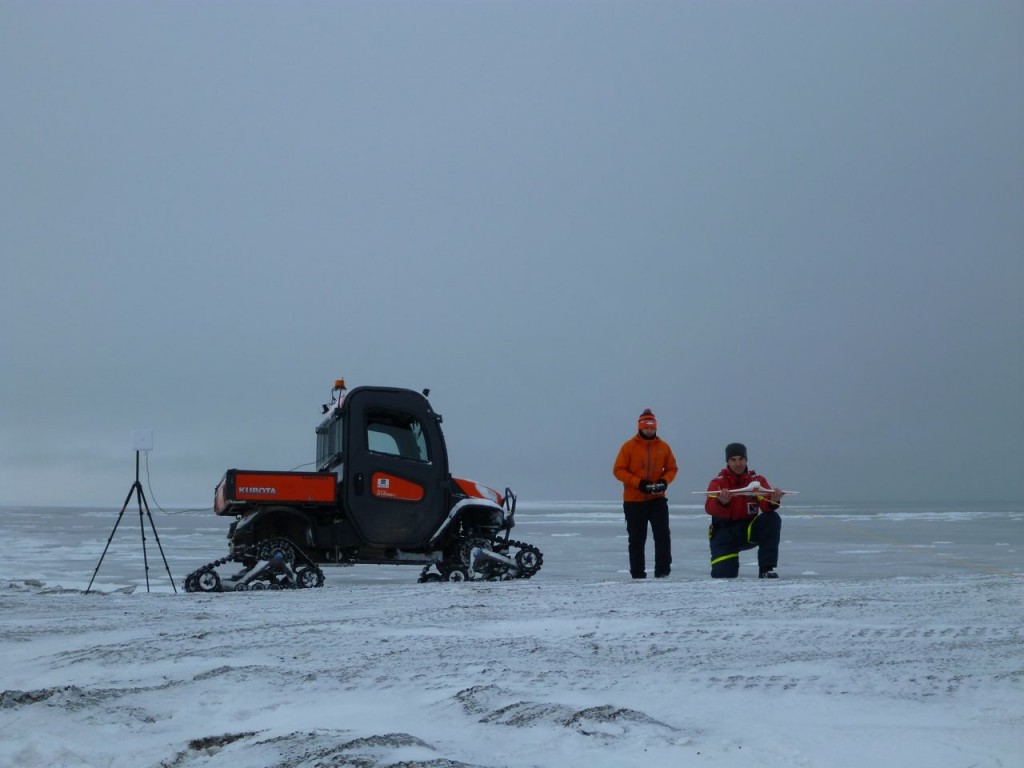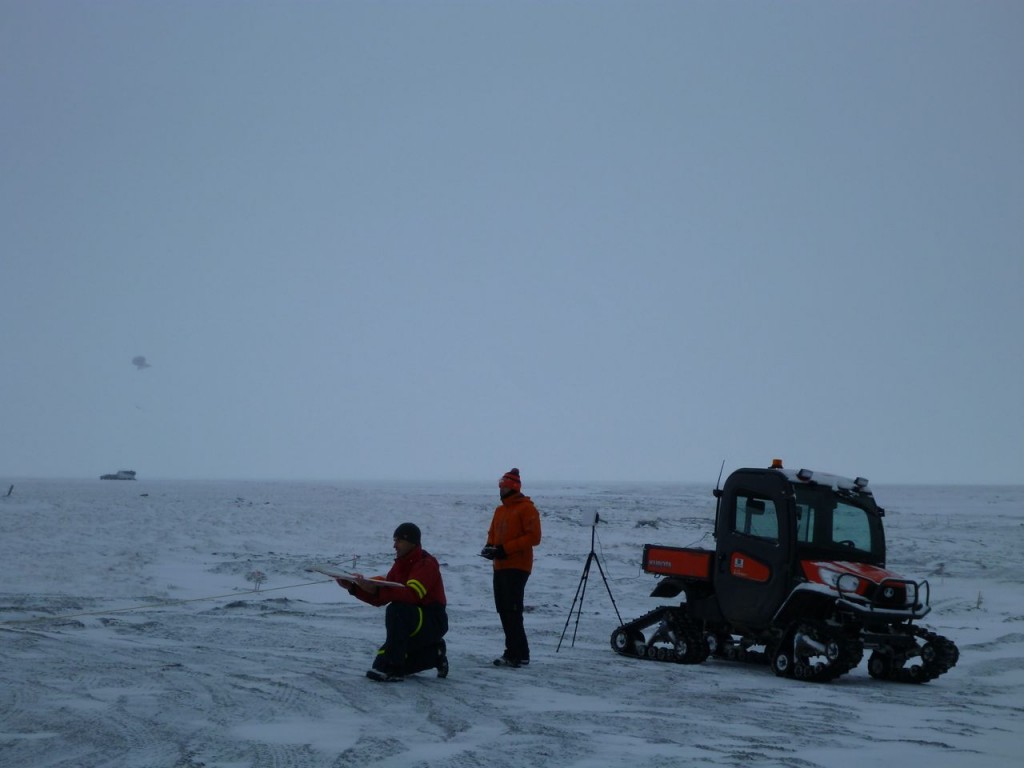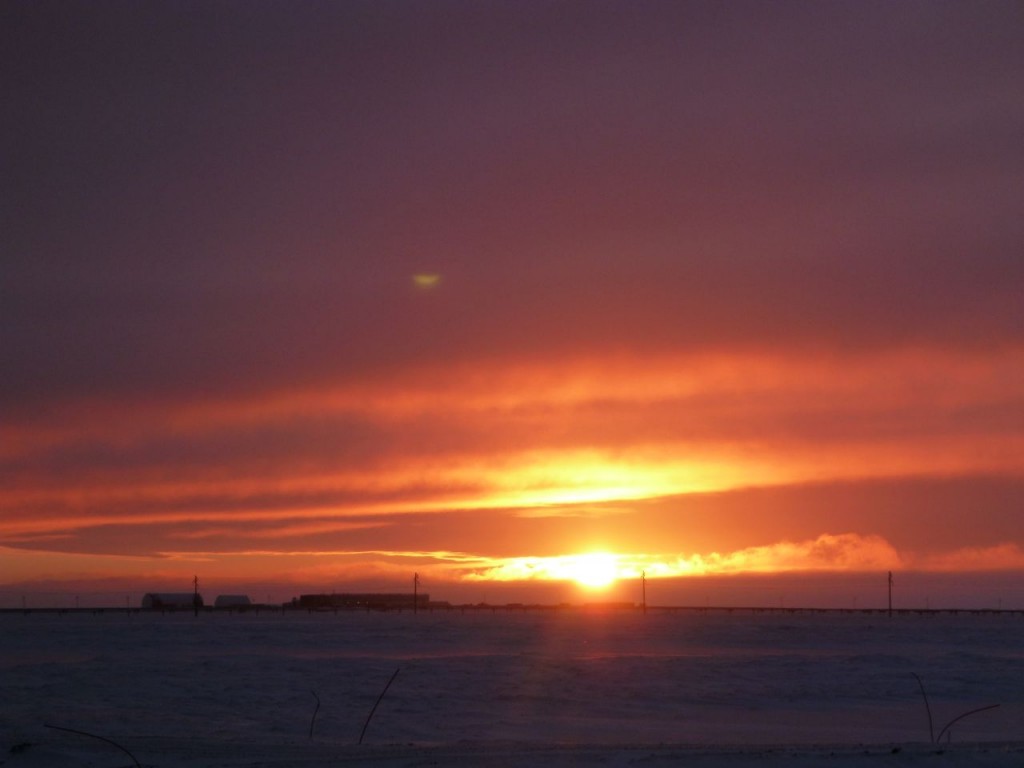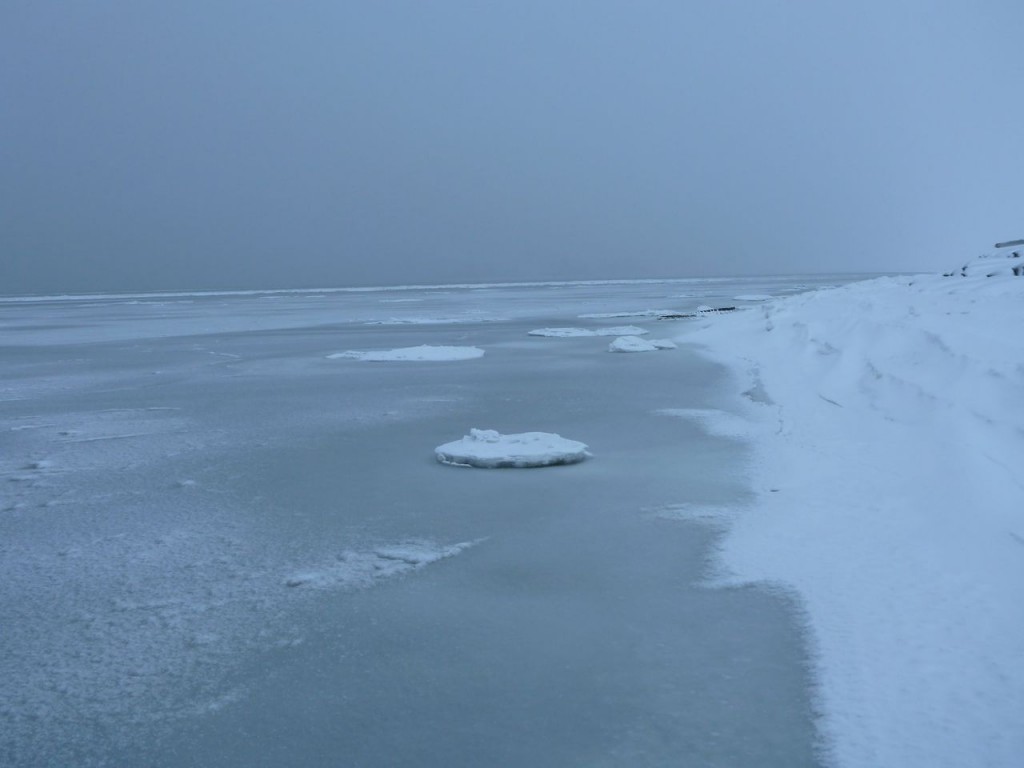This morning I was optimistic – the wind was way down, and for the first time since we arrived nearly two weeks ago, we saw the sun. By all accounts, it looked like it was going to be a good day for flying. Jack and I headed out around 930 this morning (right at sunrise!) to start our preparations and try to take advantage of the calmer day. Unfortunately for us, the good weather did not last long – winds kicked up briefly this morning, but the bigger problem was low cloud cover, fog and snowfall rolling in for much of the middle of the day. At this time of year, the influence of the Arctic Ocean is never out of reach, and the interface between cold air and a substantial source of water vapor from the open ocean surface can result in what we have been calling “soupy” conditions.

A panorama looking east from Oliktok Point at sunrise. Note the contrast between the “soupy”, cloud-covered air over the Arctic Ocean, and the crisp, clean air to the south.
In the afternoon, things started looking up, however, and we decided to switch things up a bit, and take the Kubota track vehicle (a.k.a. the tundra buggy) out to the beach near the Air Force facility to get some flight legs in over the sea surface. This area is becoming more and more ice covered and it won’t be long before it is frozen solid. We’ve had some good flight time over this near shore environment, and hope that a thorough analysis of the measurements collected will result in interesting findings.

Operations headquarters for this afternoon. One of the beautiful things about operating the DataHawks is how little equipment is required!

Jack and I prepare for launch at the beach. Note the tethered balloon system flying at the end of the runway in the background!

Jack keeps a watchful eye on the DataHawk as it passes by at 20 meters altitude over the sea ice. The small spec in the middle of the photograph is the airplane!
Tomorrow is our last day of operations up here. The forecast is calling for light winds, with a good chance for precipitation. We’ll have to see how conditions are for flying, but I’m optimistic that we’ll be able to get some last flights in before having to pack up our equipment for the return trip to Boulder. So far, it’s been great being up here – we have nearly 30 flights under our belts since arriving and have collected a substantial amount of data. Beyond this, we’ve learned quite a bit about our equipment, what we would do differently next time, and what our limitations are. To me, it’s been a very successful trip!



